Chapter 10
Inclusion of the Gentiles
Tiberius, Caligula, and Agrippa
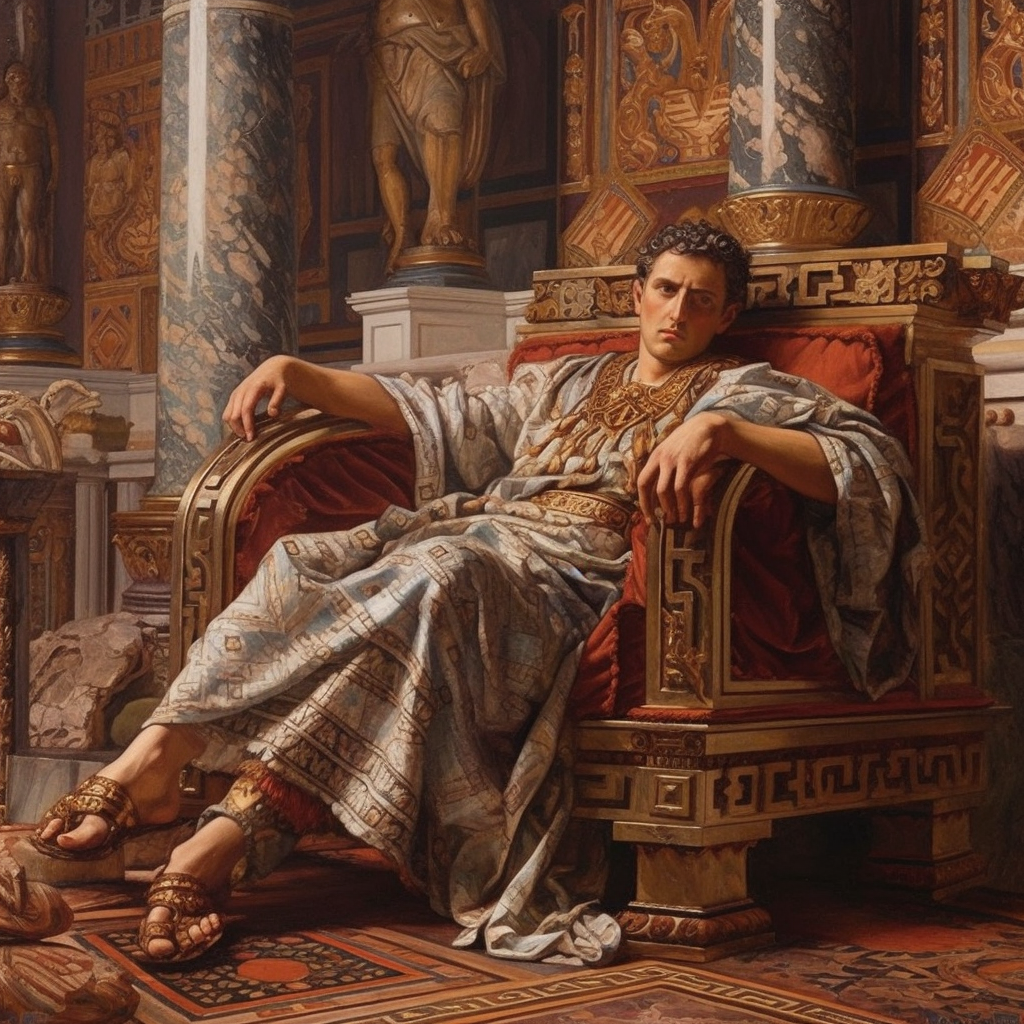
A grandson of King Herod named Agrippa—in honor of Emperor Octavian’s favorite general—had been sent to live in Rome to receive his education. There he studied alongside the (future emperor) Tiberius’s son as well as another future emperor, Claudius. But living recklessly and extravagantly, young Agrippa fell deeply into debt. He fled to Egypt and then to Judah, and was eventually able to beg, borrow, and steal enough funds to return to Rome. There he became tutor to Tiberius’s grandson and also befriended yet another future emperor, the young Caligula.1Whiston, W. (1999). The New Complete Works of Josephus. Kregel Publications.
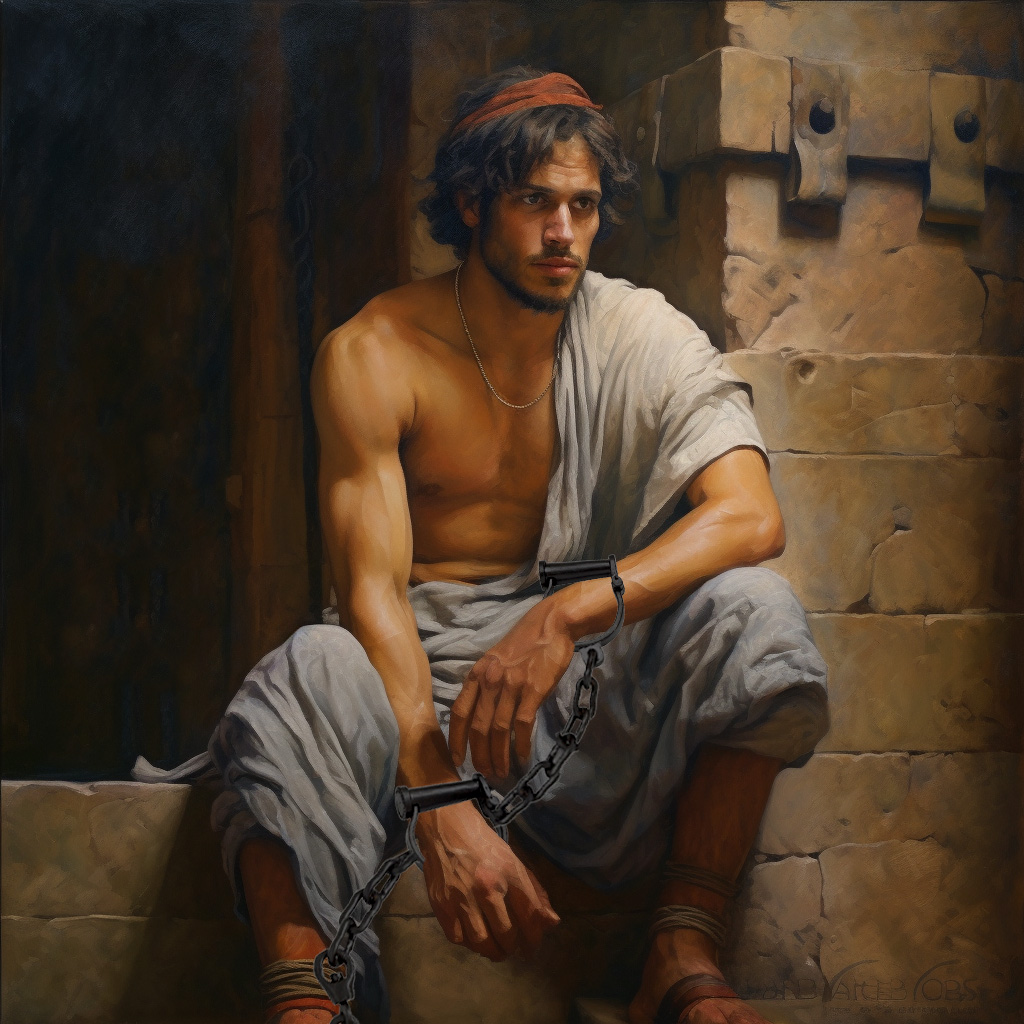
Despite his long reign as the second emperor of Rome, Tiberius is said to have never wanted the job, and the historian Pliny the Elder referred to him as “the gloomiest of men”.2Pliny the Elder, Liber XXVIII Now in his 70s and frail, Tiberius had moved away from the capital to reside on the small island of Capri off the coast of Naples.3Tacitus, The Annals, IV.67.
Meanwhile, at a feast one evening, Agrippa toasted Tiberius’s designated heir Caligula, expressing a wish that the emperor would die already so that his friend could become the emperor of the world. Some servants who overheard this comment immediately reported it to Tiberius who ordered that Agrippa be put in chains and thrown in prison.4Whiston, W. (1999). The New Complete Works of Josephus. Kregel Publications.
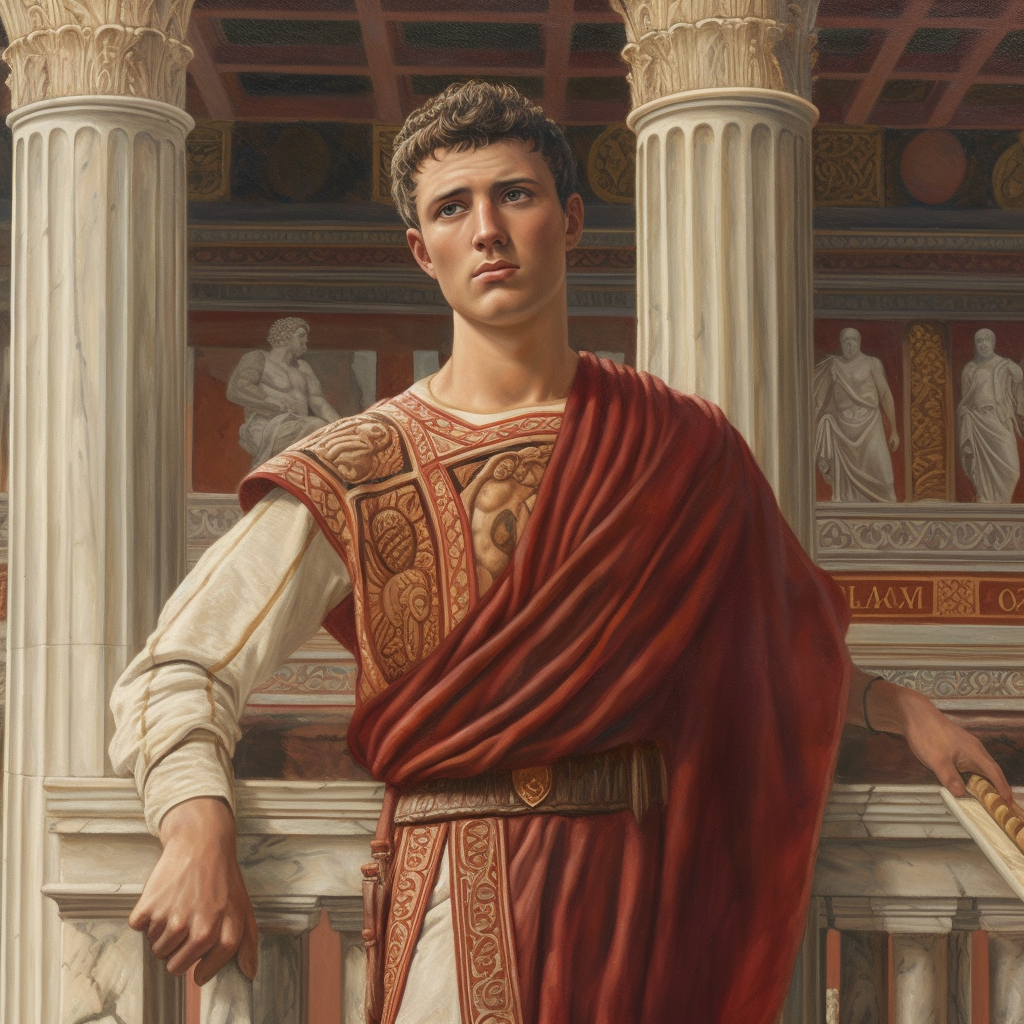
Six months later, in 37 CE, the 77-year-old Tiberius fell ill. When it looked as though there was a chance he might recover, Caligula and a conspirator smothered him to death with his pillow. A grand funeral was held, and then due to Tiberius’s unpopularity, his 25-year-old grand-nephew Caligula was warmly welcomed as Rome’s third emperor. Immediately upon his ascension, Agrippa was freed from prison and awarded chains of gold to replace the iron chains with which he’d been bound. He was also given a monarchy in Judah.5Whiston, W. (1999). The New Complete Works of Josephus. Kregel Publications.
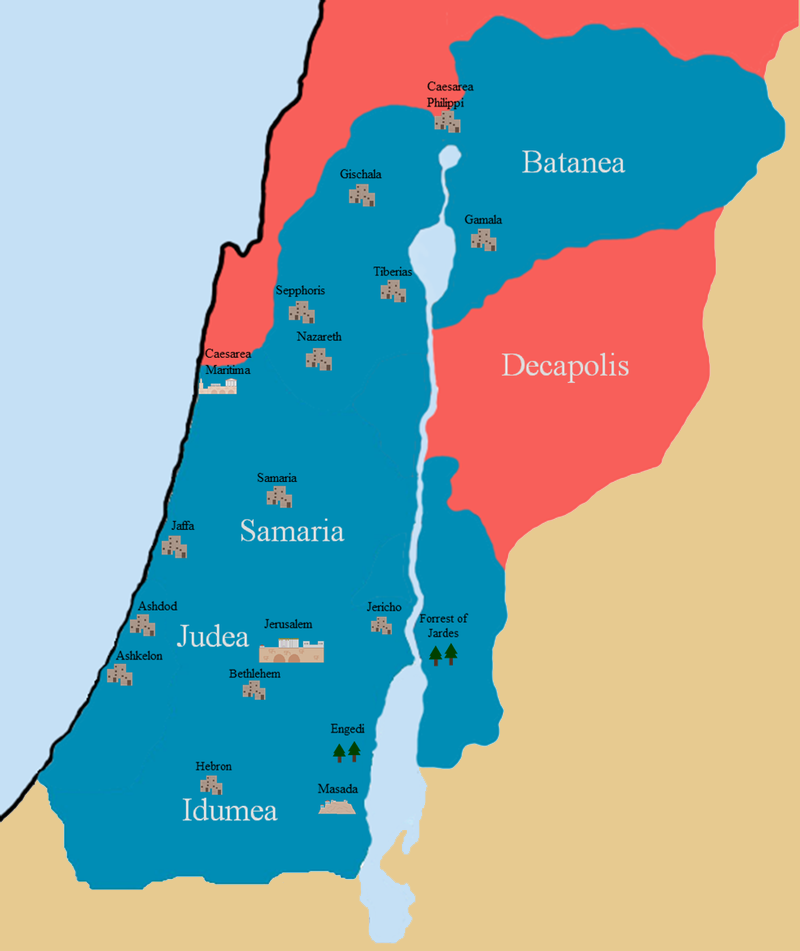
Soon after Agrippa returned to his homeland to reign as king, he took aim at his uncle Antipas—the ethnarch who had John the Baptist executed, accusing him of having spoken against Emperor Caligula. As a result, his uncle Antipas was stripped of his position, and banished to Gaul (France). His forfeited kingdom on the eastern side of the Jordan River was then awarded by Caligula to Agrippa, making his realm now approach the size of that once ruled by Herod or the Maccabean kings.6Whiston, W. (1999). The New Complete Works of Josephus. Kregel Publications.
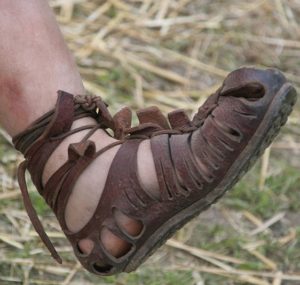
Despite being known to history as “Caligula”, this was actually only a nickname. Being the son of a highly respected general, as a small child, the future emperor traveled with the army on a campaign against the Germans. As a sign of respect, they dressed him as a sort of miniature legionary, from head to toe, including the caligae sandals worn by the soldiers. For this reason he became known among the legionaries as Caligula (“little boots”).7Suetonius, Caligula 9. This moniker stuck, perhaps because it helped people, then and now, distinguish him from his even more famous ancestor of the exact same name, Gaius Julius Caesar.
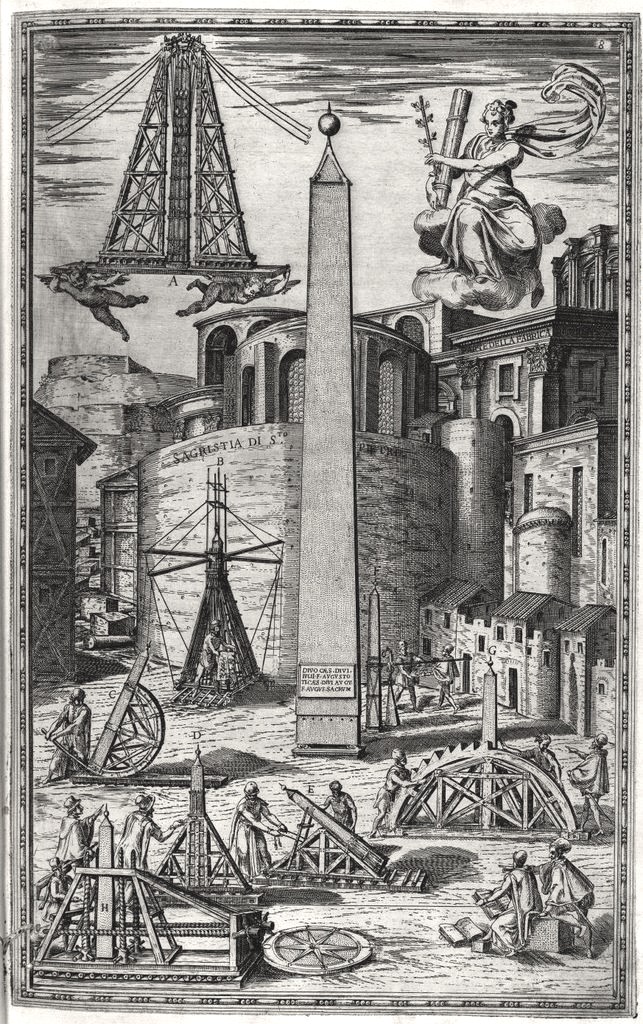
In the first 6 months of his reign, Caligula was considered a moderate ruler, making egalitarian reforms, and even reestablishing some amount of democracy in government. He launched several notable construction projects8Suetonius. Caligula 21.—and also had a massive obelisk taken from its home in Egypt and re-erected as the centerpiece of a grand chariot racing stadium in Rome where it still stands today in what is now the Plaza of Saint Peter in Vatican City.9Pliny the Elder. XVI.76.
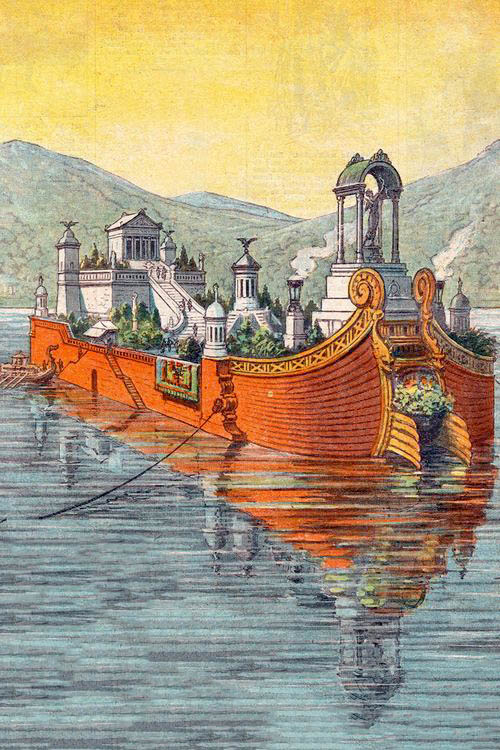
He also built one of the largest ships in the ancient world which acted as a floating palace with floors of marble—and which survived until its destruction during World War II.10Carlson, D.N. Caligula’s Floating Palaces. Archaeology. May/June 2002, Vol. 55, Issue 3 On the military front, Caligula expanded the borders of the empire with conquests in Northern Africa, and continued campaigns to control the island of Britain.11Suetonius, Caligula 7.
Caligula and The Jews
By 40 CE, however, Caligula’s reign took a turn. During a political feud, he made a purge of his enemies in the Senate, executing some and publicly degrading others.12Barrett, A.A. (2015). Caligula: the abuse of power. London: Routledge. He then began making public appearances dressed as various gods, demanding to be worshiped.13Philo, On the Embassy XI–XV. While his predecessor Tiberius had promoted the cult of Octavian across the empire, he never showed any inclination to be worshiped himself. And though Julius Caesar and his successor Octavian had been deified upon their death, Caligula did not care to wait so long.
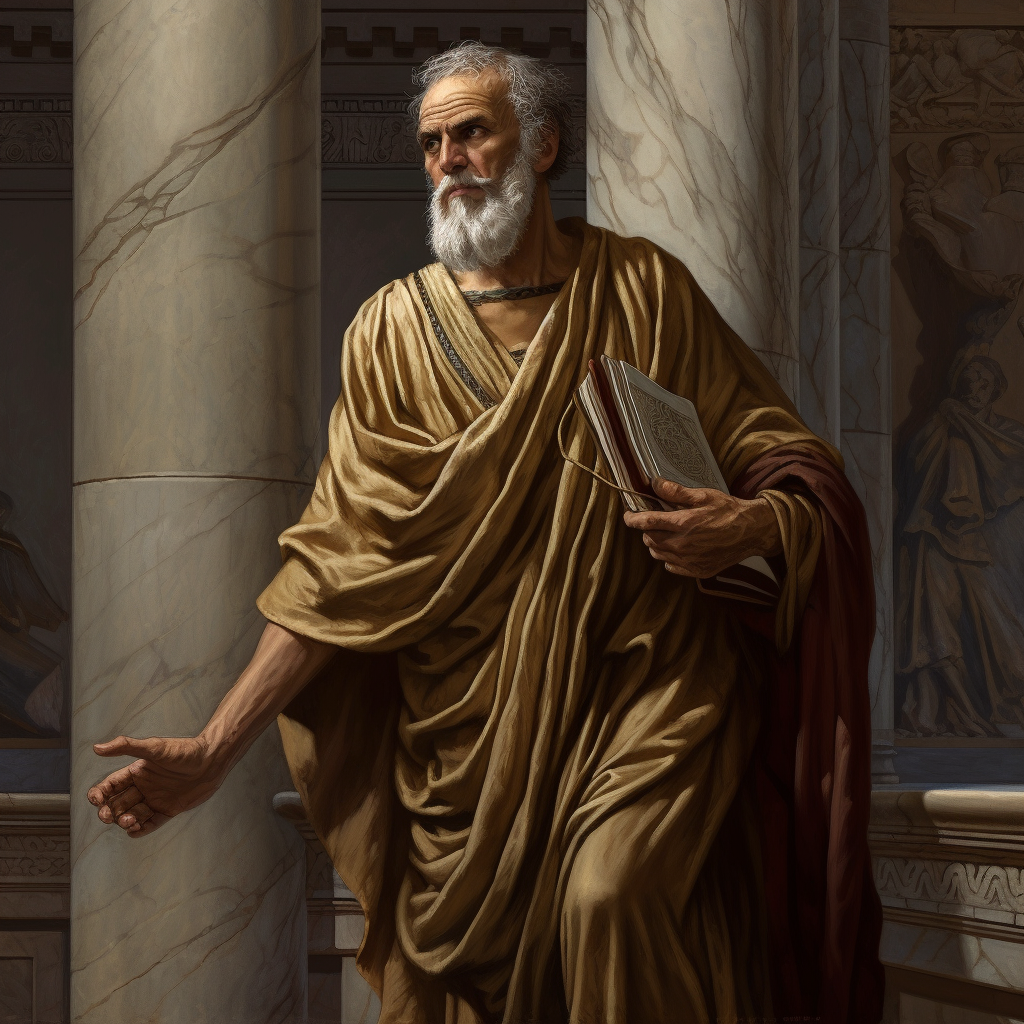
Meanwhile in Egypt the large Jewish population in Alexandria had been facing a series of increasingly violent attacks from the majority Greek inhabitants over the course of the past two years, and the situation was getting worse. An intellectual named Apion had written to the emperor making all manner of anti-Jewish accusations, including the slanders that they ritually kill and eat babies, and secretly worship the head of a donkey. He also accused them of disloyalty to the emperor in their refusal to worship him. To defend against the charges, the Alexandrian Jews sent a delegation to Caligula headed by the same Philo Judaeus whose writings we earlier examined. But upon their arrival, the emperor refused to even listen to them.14Whiston, W. (1999). The New Complete Works of Josephus. Kregel Publications.
The Roman governor in Alexandria at this time was a man named Flaccus. Caligula did not like or trust him, and so he asked his friend King Agrippa in Judah to pay him an unannounced visit to check on him. But on arrival, the Gentile masses of Caesarea jeered at Agrippa, taking him to be the King of the Jews. Flaccus, in an attempt to placate the majority of the people and the emperor, now ordered the Jews to put statues of Caligula in every one of their synagogues. This prompted the Jews to riot. Caligula was furious at both sides. He had Flaccus executed, but also ordered that large statues of himself now be erected inside the Temple of Jerusalem.15Whiston, W. (1999). The New Complete Works of Josephus. Kregel Publications.
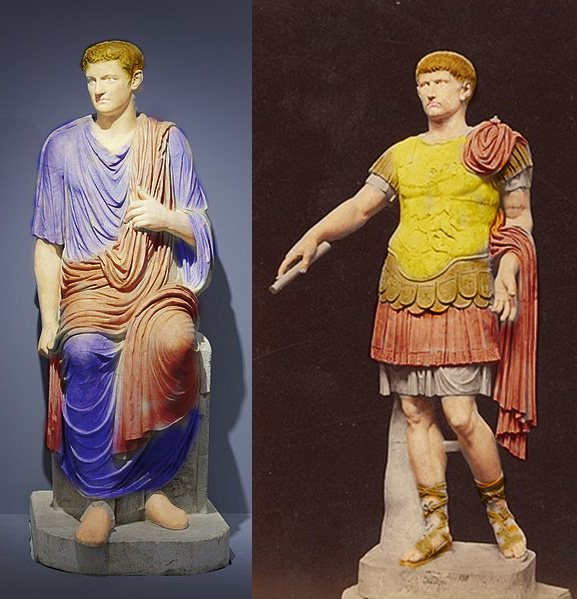
Soon after, Caligula sent a trusted senator named Petronius with these statues of the emperor to Judah accompanied by three full Roman legions given orders to kill anyone attempting to stop them from installing the statues in the Temple. A massive crowd of Jews met Petronias when he and his forces landed at a port city in Galilee, begging him not to continue on to Jerusalem. In the face of his army, they told him they were prepared to die along with their wives and children rather than allow their sacred laws to be broken in such a grievous manner. Petronius pointed out to them that all other peoples across the empire had complied with the emperor’s orders, and he demanded they show the same loyalty else they would be seen as being in revolt. The Jews pointed out that twice-a-day sacrifices were made in the Temple on behalf of the emperor and Rome.16Whiston, W. (1999). The New Complete Works of Josephus. Kregel Publications.
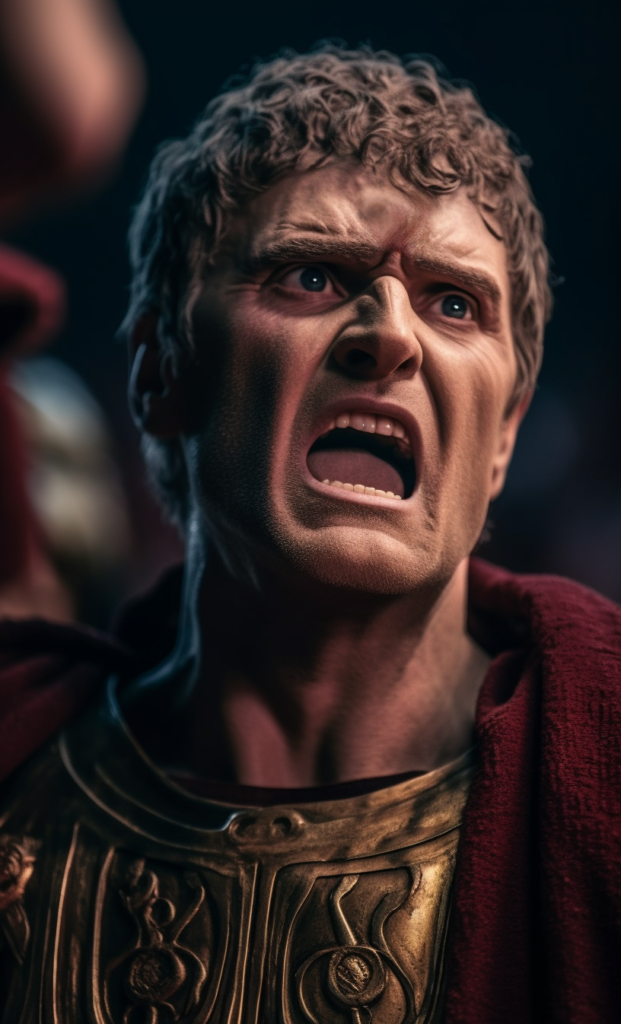
Petronius was moved by the resolve of the crowds, and promised he would write to the emperor, knowing he was risking his own life in doing so. Caligula indeed did not take the senator’s message kindly. In great anger he had a return letter sent ordering Petronius’s execution and commanding that preparations be made for war against the Jews. The ship carrying this letter, however, was significantly delayed, and before it arrived, news from another ship reached Petronius that Emperor Caligula was dead. The three legions with him in Judah were now summoned to return home to keep order in the empire’s capital.17Whiston, W. (1999). The New Complete Works of Josephus. Kregel Publications.
Agrippa and Claudius

Caligula had been assassinated by a conspiracy of senators and members of his own personal guard who hoped his death would allow a restoration of the Roman Republic. To prevent his potential successors from claiming the throne, the conspirators saw to it that all the members of his family were murdered as well. Only his uncle Claudius—who, with a limp and partial deafness, Caligula had treated as a laughing stock—survived the slaughter.18Levick, B. (2015). Claudius. Routledge. He was found by a sympathetic member of the imperial guard hiding behind a palace curtain, and quickly taken to safety. While many Romans shared the conspirator’s wish to restore the republic, the military had thrived under imperial rule, and they backed Claudius as successor.19Whiston, W. (1999). The New Complete Works of Josephus. Kregel Publications.

Visiting Rome at the time, King Agrippa then spoke before the senate on behalf of his longtime friend Claudius. The conspirator’s hopes of restoring the republic would not be possible with the military aligned against it, he pointed out. To avoid a bloody civil war that they were bound to lose, Agrippa urged the senators to accept Claudius—as he would at least rule the empire in a sane and moderate fashion. Reluctant but sufficiently persuaded, the senate recognized Claudius as fourth emperor of Rome. In thanks, Agrippa was rewarded with additional territories for his realm, causing its size to rival that of his grandfather Herod. The king also began work on a new defensive wall surrounding Jerusalem, strong enough to fend off even a Roman siege. But this gave Claudius unease, and he put a stop to the project before it was finished.20Whiston, W. (1999). The New Complete Works of Josephus. Kregel Publications.
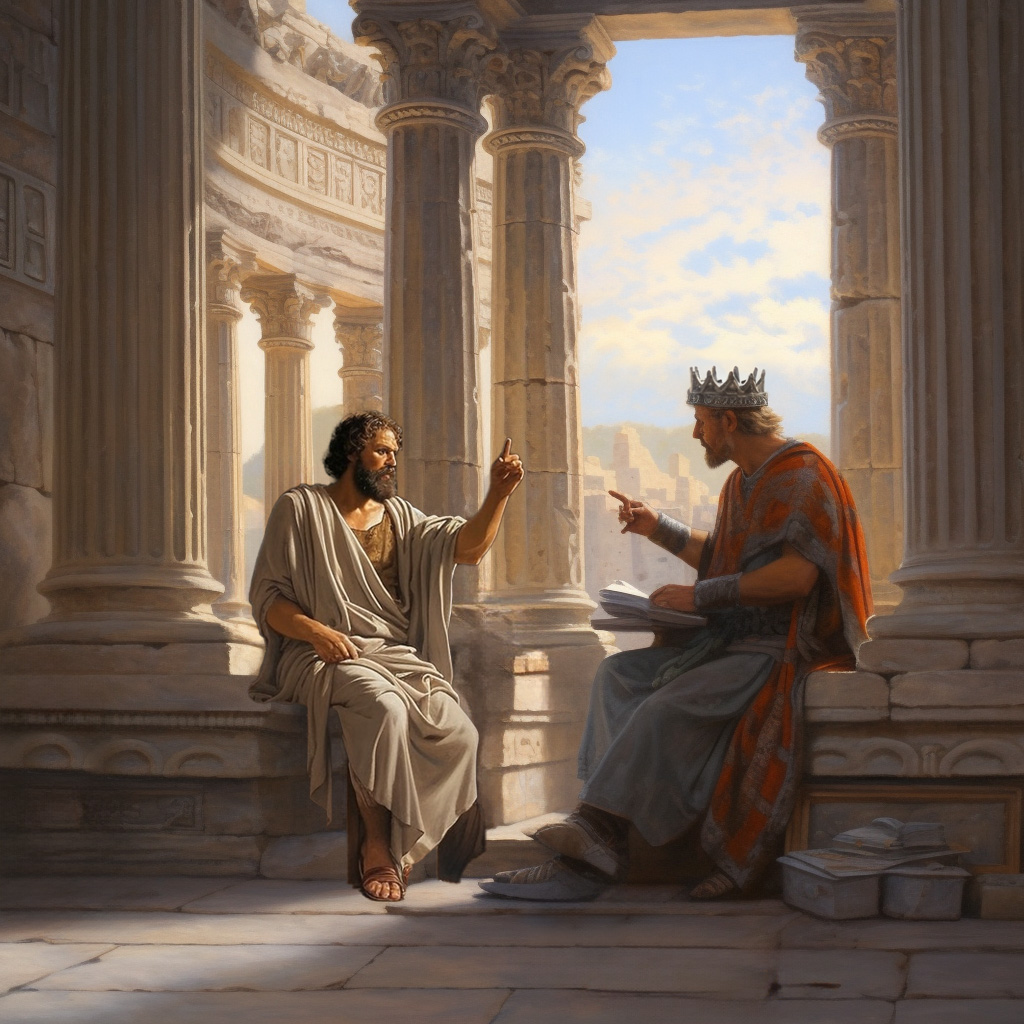
Agrippa was, for the most part, accepted by the people of Judah, despite his being the hated tyrant Herod’s grandson. Early in his reign, however, a Jewish historian of the time reports that a certain man named Simon—described as “the head of an ekklesia” and considered “very knowledgeable of the Law of Moses”—made public denouncements against the king, declaring him unworthy to enter the inner precinct of the Temple where Gentiles are strictly forbidden from entering on pain of death. Agrippa, hoping to rule with persuasion rather than force, responded by summoning this Simon to sit with him in the theater in Caesarea. There the king managed to convince him of his devout loyalty to Jewish law, and the matter was at least temporarily resolved.21Whiston, W. (1999). The New Complete Works of Josephus. Kregel Publications.
The brevity and limited detail of this story does not allow us to draw any solid conclusion, but it is an intriguing possibility that this ekklesia leader called here “Simon” was none other than apostle Peter (who is referred to as “Simon Peter” in the gospels). This would match the portrait of the earliest Christians being members of established Essene communities strongly devoted to the Law of Moses, and of Peter as a leader of such a community in Jerusalem, respected and influential enough that a local king would feel obliged to mollify him with reassurances of his devout Jewish religiosity.22Eisenman, R.H. (1998). James the Brother of Jesus: The Key to Unlocking the Secrets of Early Christianity and the Dead Sea Scrolls. Penguin.
Paul Begins His Missionary Activities
After Paul’s conversion, followed by his lengthy time in Arabia and Damascus, and then his 15-day stay in Jerusalem where, he says, he saw two of the “Pillars of the Church” Peter and James,23Galatians 1:18-19. The Bible. New International Version. Paul next traveled north. He fell in with a group of believers at Antioch in Syria,24Acts 11:25-26. The Bible. New International Version. close to his home city of Tarsus. The book of Acts mentions that, like Paul himself, one of his fellow church members there had ties to King Herod’s family, having been raised alongside one of Herod’s sons.25Acts 13:1. The Bible. New International Ve Antioch would become Paul’s base of operations for at least the next year. It is likely that it was as early as this period that Paul’s preaching began to markedly diverge from the ekklesia in Jerusalem in regards to the appropriateness of converting Gentiles, keeping the Law of Moses, and in particular, the practice of circumcision.
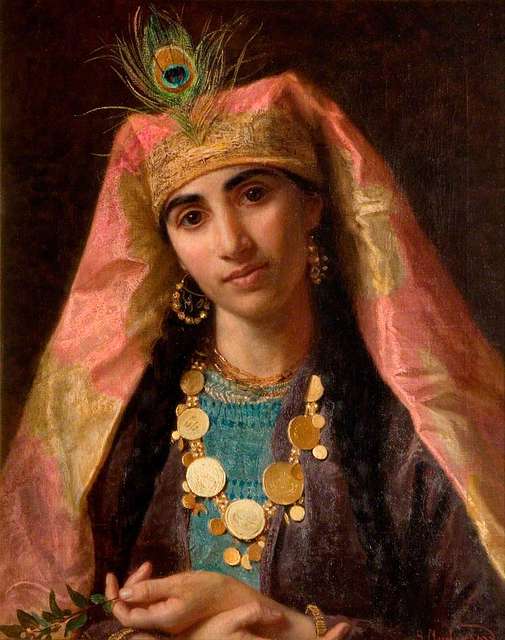
During this period a woman named Queen Helena was ruler of the nation Adiabene—just south of Armenia, strategically located as a buffer nation between the Roman and Parthian empires. Her son and chosen heir was named Izates. A Jewish historian living at this time recounts the story of a certain man named Ananias who traveled from Judah to the region where prince Izates was living. There he successfully converted a number of his women subjects to Judaism, and eventually Izates himself.26Whiston, W. (1999). The New Complete Works of Josephus. Kregel Publications. (While today we do not think of Judaism as a proselytizing religion, it was not until later laws were passed against it by the Romans and later powers that this became the case.27Goodman, M. (1995). Mission and Conversion: Proselytizing in the Religious History of the Roman Empire, Clarendon Paperbacks.) Ananias is then said to have told Izates that circumcision is not necessary for him, only his “worship of the true God”.28Whiston, W. (1999). The New Complete Works of Josephus. Kregel Publications.
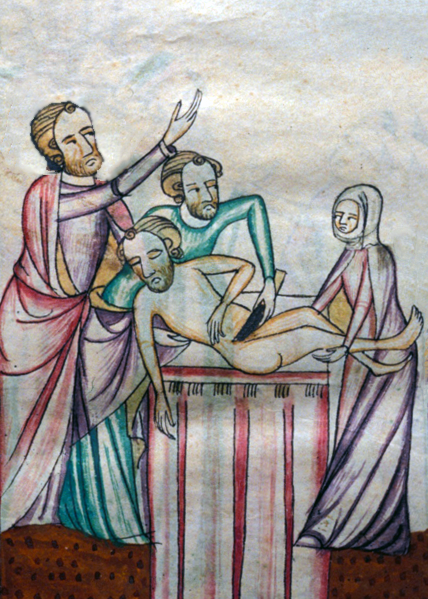
We are then told that after some time, a man named Eleazar from Galilee visited the court at Adiabene and came across Izates reading the Laws of Moses. He told the recently-converted prince it was a shame he was not obeying what he read, instructing him that it was imperative that he become circumcised as soon as possible. Zealous in his new faith, Izates immediately summoned a doctor who performed the surgery. (His mother, Queen Helena, also became a convert soon after, and in the coming years she and her family would prove to be important allies to the Jews.)29Whiston, W. (1999). The New Complete Works of Josephus. Kregel Publications.
What is of particular interest about this story is that the book of Acts also presents a story about a man named Ananias who is associated with the conversion of Paul on the way to Damascus.30Acts 9:10-18. The Bible. New International Version. Scholars have generally considered these two men named Ananias to be different people—after all, one is associated with someone converting to Judaism, the other with someone converting to Christianity. But at this early date, circa 45 CE, both Paul’s and Izates’s conversion would have been seen as conversions to Judaism, for, as even the book of Acts tells us, the term “Christians” was not yet in use—they were not yet seen as members of a separate religion. With this in mind, a picture emerges of a church in Antioch in which men like Ananias and his protege Paul were proselytizing to Gentiles like Izates, spreading their particular form of messianic Judaism which downplayed the need for strictly following the laws of Moses such as circumcision, while at the same time men like James, Peter, and this Eleazar—coming from an Essene background in which the strict obedience to all aspects of the Law of Moses is paramount—are visiting men like Izates and demanding his immediate circumcision.31Eisenman, R.H. (1998). James the Brother of Jesus: The Key to Unlocking the Secrets of Early Christianity and the Dead Sea Scrolls. Penguin.
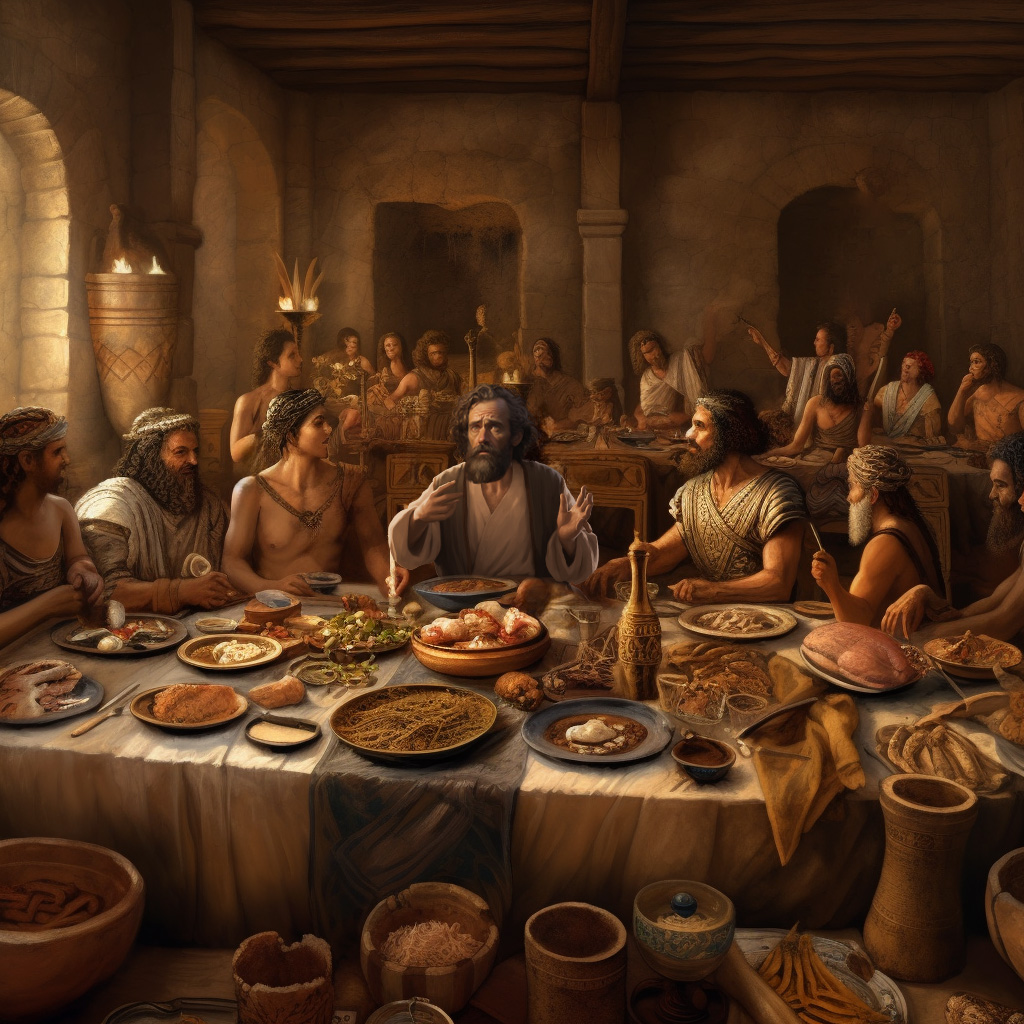
The necessity of circumcision, following the Laws of Moses, and keeping oneself separate from the company with Gentiles to avoid ritual pollution were to become the defining issues driving apart Paul and the founders of Christ-belief in Jerusalem. Paul relates in one of his epistles that Peter paid a visit to Antioch and was eating his meals among some converts who were Gentiles. But when other men arrived who were sent by James, Peter began eating separately. Paul boasts that he called out Peter’s hypocrisy to his face, and mocks him in his letter for being “afraid” of those sent by James.32Galatians 2:11-21. The Bible. New International
Paul soon after leaves Antioch to go on his first missionary journey, traveling to cities with significant Jewish populations in central and southern Asia Minor and the island of Cypress.33Paul’s First Missionary Journey Map. https://www.biblestudy.org/maps/pauls-first-journey-map.html He mainly visits synagogues and expends most of his efforts attempting to make converts to Christ-belief among a group known as “God-Fearers”—a name applied to Gentiles who regularly attend synagogues but who have not yet converted. Later on, a story is related—in vague terms—about a bitter falling out Paul has with a Jewish traveling companion named John Mark who decides to leave the journey and return to Jerusalem.34Acts 15:36-41. The Bible. New International Version. From this point on Paul would travel almost exclusively with those described either as half-Jewish or those who were fully Gentile.
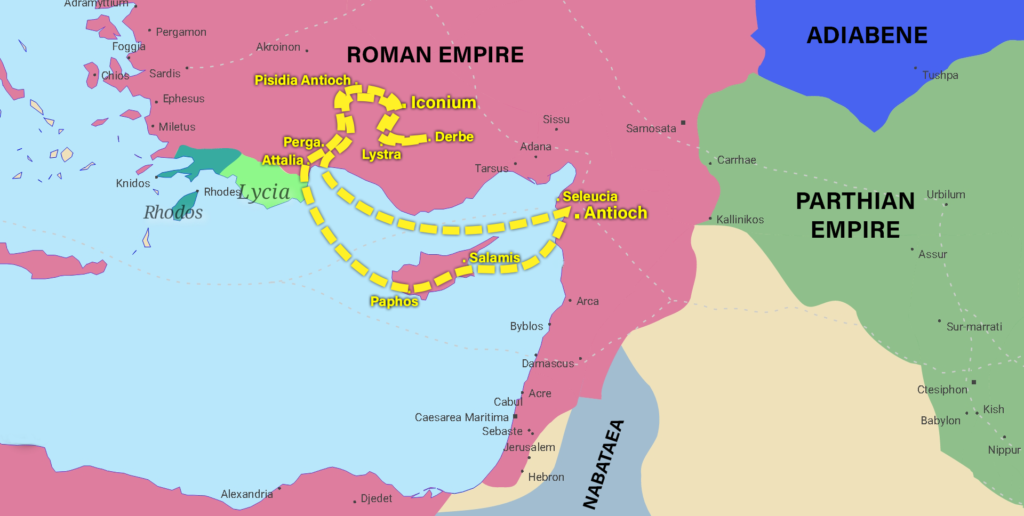
The “gospel” of Jesus Christ preached by Paul to the Gentiles was, at its core, seemingly very similar to that being taught by James and Peter. He describes it as “the revelation of the mystery that had been kept secret for long ages, but now is disclosed” to apostles like him “through the prophetic writings”. The heavenly messiah Son of God has existed since the very beginning, but it is only now in this Final Age that God is allowing his existence to become known to a select few like himself, sent out as messengers. And by what mechanism does Paul say Jesus’s existence is being revealed? “Through the prophetic scriptures,” and through visions.35Romans 16:25-26. The Bible. New International Version. For Paul and all the earliest Christians, these two methods are—until Jesus appears in glory on the clouds with his army of angels—the only ways humans have access to knowledge of the savior.

While Paul, Peter, and James share that core understanding of the revelation of Lord Jesus Christ, they do not at all agree on the implications concerning how humans should behave in the short time before the world ends. Those of the Jerusalem church are fanatically devout Essenes who believe that strict adherence to every last little bit of the Law of Moses is required to be among the elect who will be rewarded with eternal life in heaven on Judgment Day. Paul, however, whose background is more worldly and cosmopolitan, is their polar opposite on this matter, and considers the Law of Moses to have effectively been rendered a relic of the past to be discarded.
Apostle to the Gentiles
While Paul was away on his first missionary journey, between 45 and 47 CE, a famine struck the entire Levant, causing great suffering. The recent convert Queen Helena of Adiabene came to the rescue of the Jews, sending her agents to Egypt to purchase huge amounts of grain for the populace. Pious in her family’s new faith, the queen made frequent trips to Jerusalem, even having a palace built for herself in the city.36Whiston, W. (1999). The New Complete Works of Josephus. Kregel Publications. In thanks for her great efforts in saving countless lives from starvation, after her eventual death, a great mausoleum was constructed in her honor along the approach to the city walls of Jerusalem, the foundation of which can still be visited to this day.37Eisenman, R.H. (1998). James the Brother of Jesus: The Key to Unlocking the Secrets of Early Christianity and the Dead Sea Scrolls. Penguin.

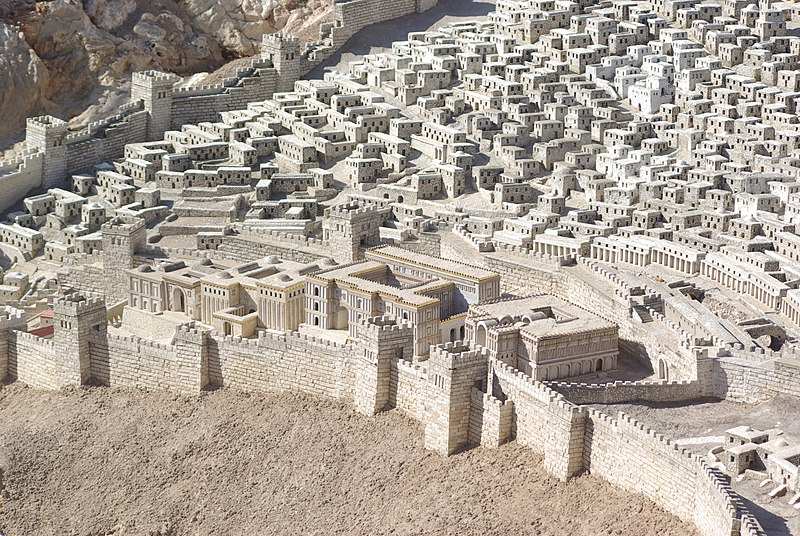
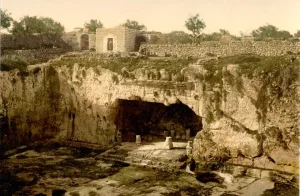
Having collected famine relief funds from communities he visited on his journey, Paul now returned to Antioch. While there, men sent from Jerusalem arrived and began to preach that “unless you are circumcised according to the custom taught by Moses, you cannot be saved.” In his writings, Paul describes these men as “false brothers with false pretenses” who snuck in to “spy on the freedom that we have in Christ Jesus” and “to make us slaves.” Immediately following this, Paul writes that for the first time in 14 years, he decided to go to Jerusalem. As if protesting too much, he repeatedly insists that he’s going of his own accord—not because he was summoned by the “so-called pillars”. Nonetheless, what follows is a meeting of apostles in which James is clearly in charge.38Galatians 2:1-5. The Bible. New International Version.
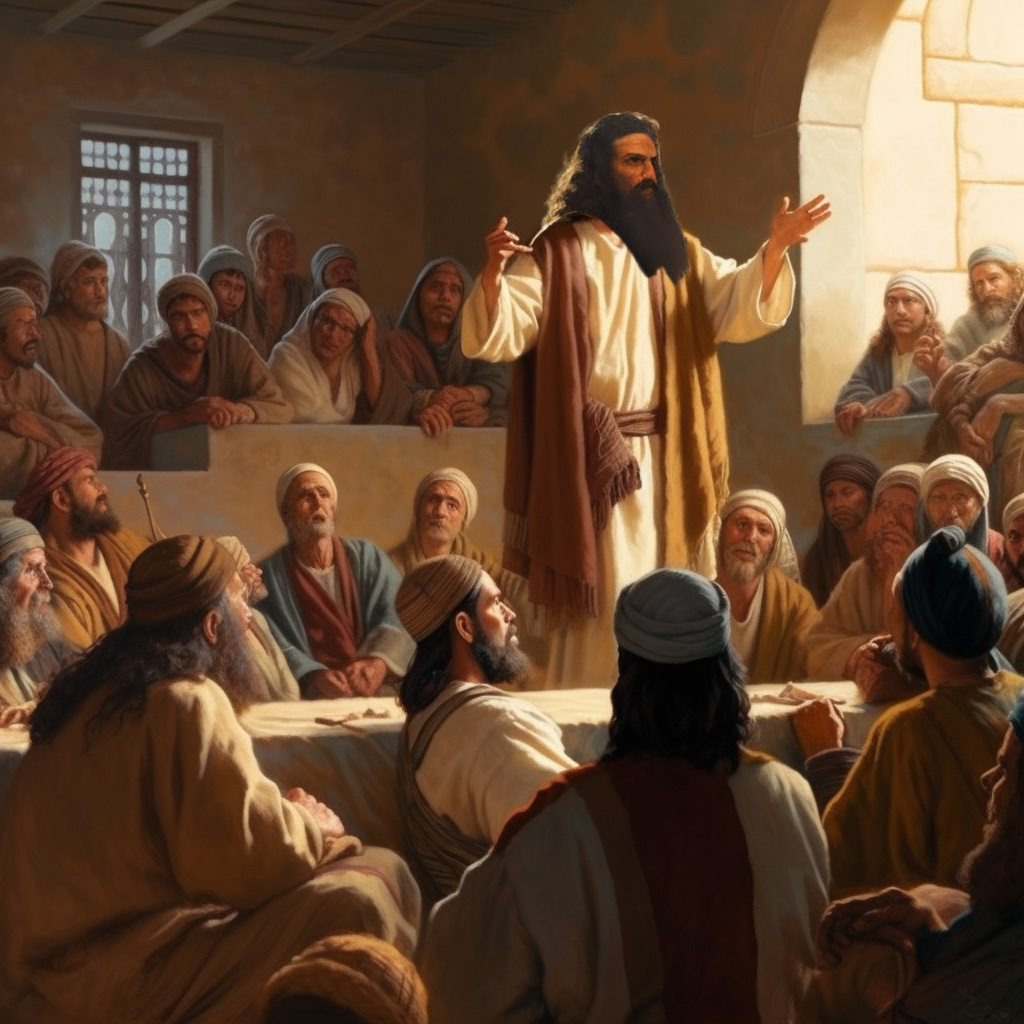
Paul would later portray the Council of Jerusalem—as it has come to be called—as a victory for him, claiming to have won the approval of James and Peter after explaining to them that he had received a divine calling to act as Apostle to the Gentiles, just as Peter had been called to preach to the circumcised.39Galatians 2:6-9. The Bible. New International Version Whether or not Paul’s account is trustworthy is debatable, especially given that his relations with the Jerusalem leadership only deteriorated from here.
According to the book of Acts, this council came to a close with James resolving that a letter will be drafted to the communities abroad that will clearly set forth the requirements for a prospective member to join the church and participate in its rituals. They must:
- abstain from things polluted by idols
- abstain from fornication
- abstain from carrion (expressed by the idiom “anything strangled”) and from blood40Acts 15:19-20. The Bible. New International Version.
Anything else that this letter might have contained isn’t mentioned by the writer of Acts, but there’s actually good reason to believe we have access to this letter in its entirety today—though it has gone unrecognized by the vast majority of scholars.
The Teaching of the Apostles
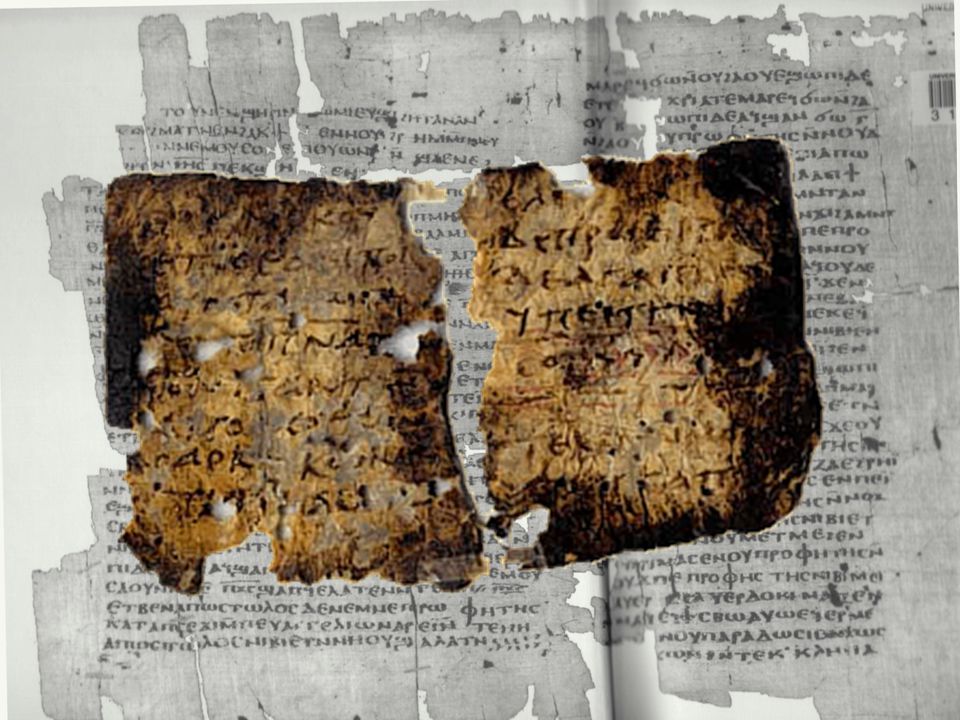
There exists a very early Christian document titled The Lord’s Teaching Through the Twelve Apostles to the Gentiles—or more simply known as The Teaching of the Apostles—or by its even more shortened form of its Greek name, The Didache ( “The Teaching”). It was widely used in the early church for at least two centuries. A church elder in 215 CE even referred to it as scripture, while other churches tacked it on to the end of the New Testament as important reference material. After it fell out of favor, though, the document was lost to history for about 1,500 years until a manuscript of it was re-discovered in a small library in Istanbul in 1873.41Britannica, T. Editors of Encyclopaedia (2021, October 18). Didachē. Encyclopedia Britannica. https://www.britannica.com/topic/Didache
The Teaching of the Apostles has long been thought by scholars to have originated in Palestine or Syria, and its outlook is much closer to that of James, Peter, and the Essenes than to that of Paul.42Milavec, A. (2007).The Didache: Faith, Hope, & Life of the Earliest Christian Communities, 50-70 C.E. The Newman Press. Its opening chapters concern what it calls The Two Ways—the way of life and the way of death. Among the many instructions for taking the way of life are:
- Do not do to another what you would not want done to you
- Bless those who curse you, and pray for your enemies
- Love those who hate you, and you will not have an enemy
- If someone strikes your right cheek, turn to him the other also
- If someone takes your cloak, give him your coat as well
- Give to everyone who asks of you, and do not ask for it back
- Be meek, for the meek shall inherit the earth
- Do not turn away someone in need, but share all things with your brother. Do not claim things for yourself.43Didache. Early Christian Writings. https://www.earlychristianwritings.com/text/didache-roberts.html
To those with knowledge of the gospels, these will appear to be near-direct quotes of some of Jesus’s most famous teachings in the Bible, yet not a single one of these (or any of the document’s other moral teachings) are attributed to Jesus. Like all other earliest Christian writings, The Teaching of the Apostles also appears to be entirely unaware of the notion that Jesus very recently had a life and ministry on earth or provided any teachings to his followers. Odd as it may seem, we will build the case that the dependency must have actually worked in the opposite direction—that is to say, the early church teachings recorded here and elsewhere were decades later put into the mouth of a historicized Jesus.
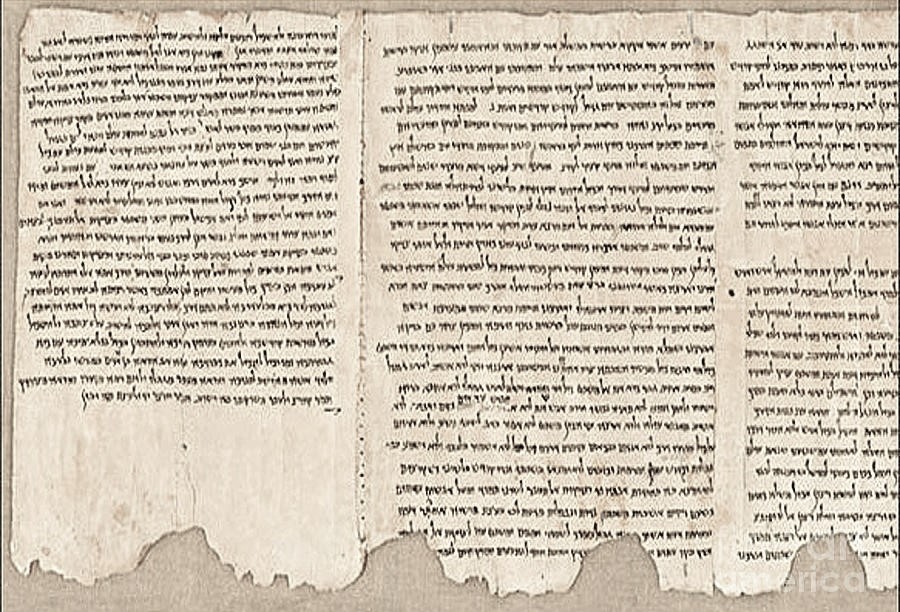
What this Two Ways discourse most resembles is a section of an older congregational manual called The Rule of the Community which was one of the documents found among The Dead Sea Scrolls which contrasts the Spirit of Truth and the Spirit of Injustice. Those of the former are said to be ruled by the Prince of Light, while those of the latter are ruled by the Angel of Darkness. The former, it decrees, must have a spirit of humility, abundant charity, zeal for the Laws of Moses, admirable purity, patience, unending goodness, mighty wisdom, intelligence, trust in all the deeds of God, and faithful concealment of the mysteries of the truth. While the traits of those of the latter include: greed, deceit, cruelty, anger, a spirit of lust, a blaspheming tongue, haughtiness, and impurity. There also exists a second badly damaged Essene scroll which presents a similar contrast of The Way of Good and The Way of Evil.44Vermes, G. Complete Dead Sea Scrolls. Penguin Books.
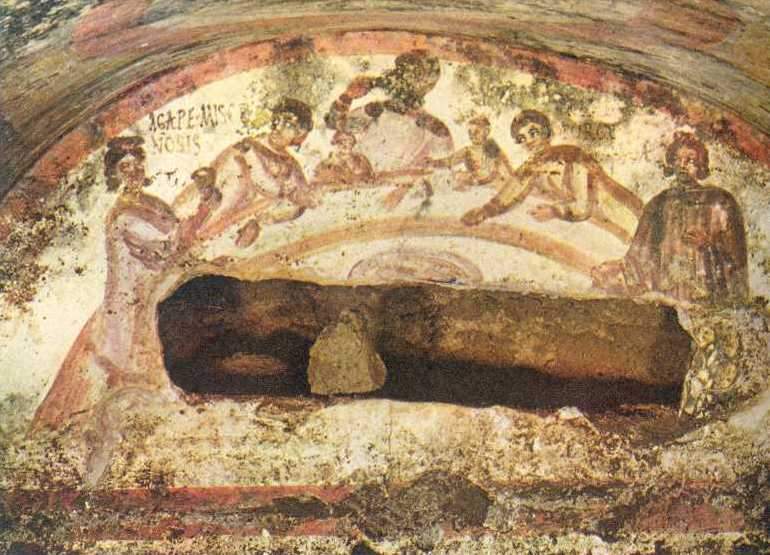
The second section of The Teaching of the Apostles concerns the most important rituals of the earliest Christian communities. Its description of the Eucharist appears to reflect the sacrament at an extremely early point in its development, before it was even thought to have been initiated by Jesus himself, and even before the bread and wine were thought of as representing (much less actually being) the body and blood of Jesus. The text reads:
Now as regards the Eucharist, give thanks in this manner. First for the cup: “We give thanks to you, our Father, for the holy vine of David, your servant, which you have made known to us through Jesus, your servant. To you be the glory forever.”And for the broken bread: “We give thanks to you, our Father, for the life and knowledge which you have made known to us through Jesus, your servant. To you be the glory forever. As this broken bread was scattered upon the mountains and gathered together and became one, so let your church be gathered together from the ends of the earth into your kingdom.”45Didache. Early Christian Writings. https://www.earlychristianwritings.com/text/didache-roberts.html
The third and final section of The Teaching of the Apostles provides early Christian communities instructions concerning how to treat the various itinerant apostles visiting their communities. Its descriptions of local congregations receiving regular visits from traveling prophets and preaching apostles—along with its depiction of local church hierarchies in a not-fully-matured state—have convinced most scholars of the early date of this document’s composition. As such, it is our only window onto early Christian communities and teachings from this period that isn’t from the perspective of Paul.46Didache. Early Christian Writings. https://www.earlychristianwritings.com/text/didache-roberts.html
The reason this writing may well be one and the same as the Apostolic Decree issued by the Council of Jerusalem is that, for one, it contains very similar requirements to those mentioned in Acts, instructing:
- abstain strictly from food offered to idols, for it is worship of dead gods
- do not be lustful, for lust leads to fornication47Didache. Early Christian Writings. https://www.earlychristianwritings.com/text/didache-roberts.html
One thing it does not specifically mention is circumcision. This may be why Paul felt vindicated at the council and immediately resumed teaching his congregations to eschew this aspect of the Law of Moses. But the author of The Teaching was subtle in his approach to these matters. He writes “If you can bear the whole yoke of the Lord you will be perfect”, which seems lenient toward Gentiles, asking them to only bear as much following of the Laws of Moses as they can manage.48Eisenman, R.H. (1998). James the Brother of Jesus: The Key to Unlocking the Secrets of Early Christianity and the Dead Sea Scrolls. Penguin.
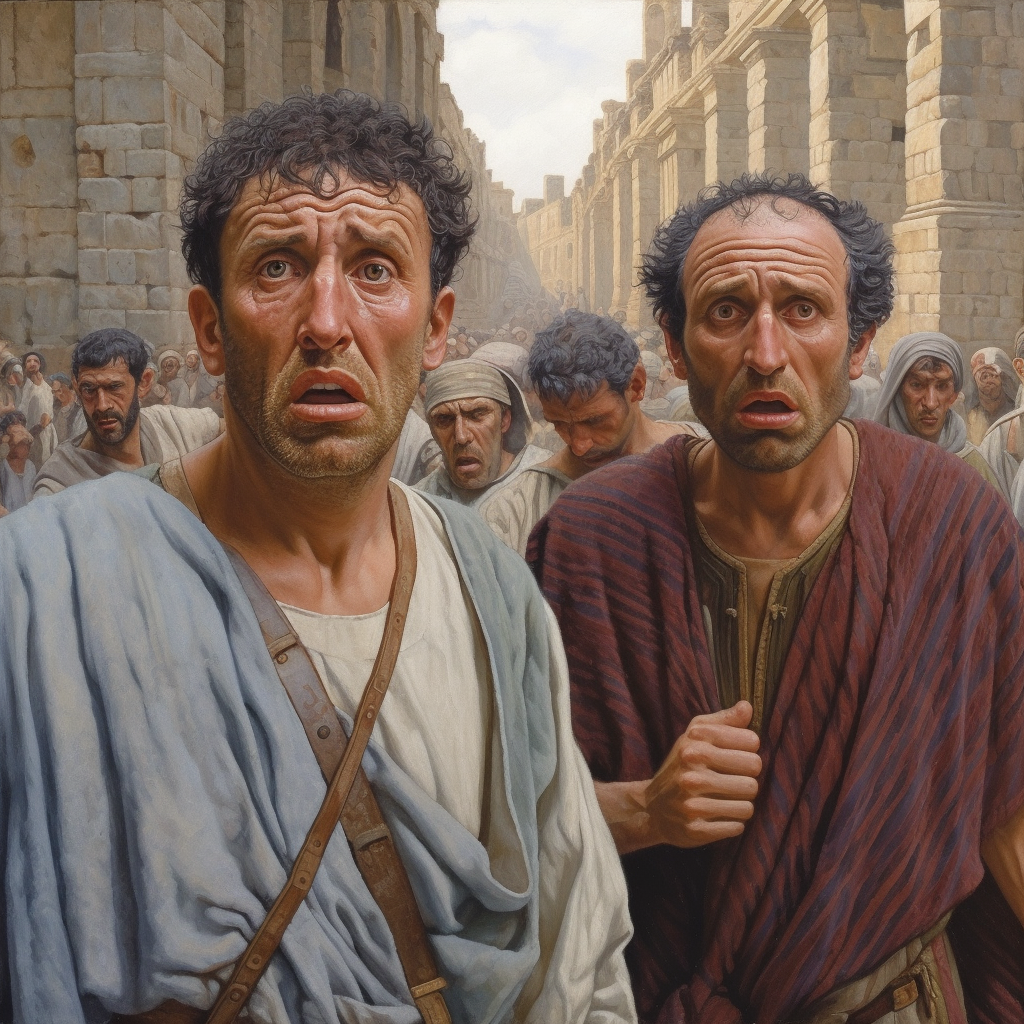
This effectively allows Gentiles entry into the community even if they are not yet “perfect”. But the author goes on to make clear: “the whole time of your faith will be of no account unless you are perfected at the final hour.” If this letter indeed came from James, he was declaring that Gentiles were welcome to join the community and even participate in baptism and the Eucharist, but that they could absolutely not achieve salvation—the ultimate goal of the sect—without a full conversion to Judaism, including circumcision and following all the Laws of Moses.49Eisenman, R.H. (1998). James the Brother of Jesus: The Key to Unlocking the Secrets of Early Christianity and the Dead Sea Scrolls. Penguin.
Salvation Religions of the Time
As is evident from the concern over food that has been polluted by idols, traditional worship of Greco-Roman and Egyptian deities remained popular throughout the Roman Empire in this era. But these ancient faiths were now competing with a new and different form of religion that had been active over the past few centuries and was now achieving its peak popularity. The draw of such religions was their offer of a cleansing from sin and the guarantee of personal salvation. This was achieved through participation in repeated rituals that reenacted the death and rebirth of the particular namesake deity of the faith.50Carrier, R. (2020). Jesus from Outer Space: What the Earliest Christians Really Believed about Christ. Pitchstone Publishing.
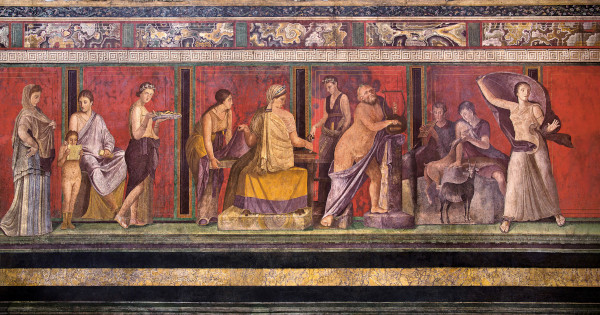
Another element these religions had in common was a strong stress on secrecy (which is why they are often referred to as “mystery cults”). Much as the Essenes had strict initiation rituals and forbade their communities from revealing their doctrines to outsiders, the salvation religions would stage elaborate initiations for prospective members—sometimes including such elements as baptism and fasting. Initiates were then sworn to secrecy concerning the myths and doctrines they would learn. While new members would be taught the myths on a literal level and receive basic level doctrines, further initiations would be required to advance to higher echelons of the cult where more secret teachings—or different, more sacred interpretations of previously learned myths—were attained.51Carrier, R. (2020). Jesus from Outer Space: What the Earliest Christians Really Believed about Christ. Pitchstone Publishing.
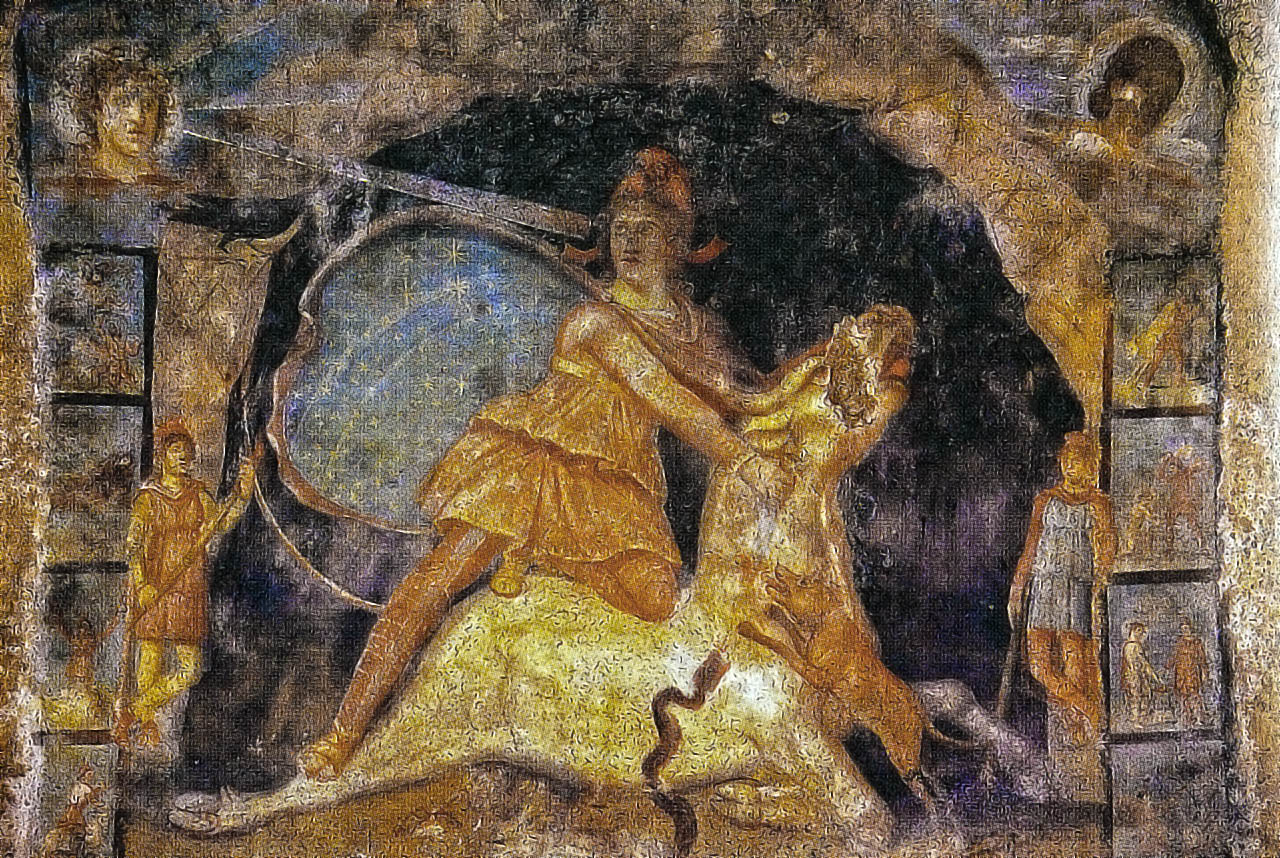
One set of secrets we do know of are from the Cult of Mithra (a deity who, like Philo’s Logos, was seen as a divine intermediary). Members of sufficient status in his church were granted the secret passwords they would need after death to pass through the gates guarded by powerful angels that separate each of the levels of heaven above the firmament.52Ulansey, D. Mithraism: The Cosmic Mysteries of Mithras. http://www.mysterium.com/mithras.html This peculiar cosmology, which we also saw in The Ascension of Isaiah, has survived to our own day in the mythology of Masons which also includes both passwords and secret handshakes needed to access and progress through Masonic rituals. Joseph Smith, the founder of the Church of Jesus Christ of Latter-day Saints, then borrowed these masonic rituals to create what he called the Endowment ceremony53Goodwin, S.H. (1920). Mormonism and Masonry: Origins, Connections and Coincidences Between Mason and Mormon Temple/Templar Rituals in which advanced initiates (often teenagers) are taught the passwords and handshakes they will one day need to access Heaven. Their cosmic journey is acted out—with church elders in the roles of angels guarding the various gates. But you’re not supposed to know any of these things about the Endowment ceremony because, like those in the ancient salvation religions, Mormons are sworn to secrecy about it.54The Mormon Temple Endowment Ceremony. (2011). Institute for Religious Research. https://mit.irr.org/mormon-temple-endowment-ceremony

While Paul almost certainly did not set out to create a Jewish imitation of the other “mysteries” (as the ancients called them), even some devout modern Christians have acknowledged their undeniable influence. Martin Luther King, Jr., as a seminary student, once wrote that “it is well-nigh impossible to grasp Christianity through and through without knowledge of these cults.” Among his observations were:
- Paul’s home city of Tarsus was one of the great centers of the Cult of Mithra
- Mithra was also an intermediary god whose title was “The Lord”
- Baptism and communal meals were some of the Mithraic sacraments
- The Mithraic holy day was Sunday and Mithra’s birthday was December 25
- Antioch in Syria was home to a major mystery cult center for Adonis (Tammuz)
- Worshippers would gather annually to mourn Adonis’s cruel death and descent to Hell. This was followed by a celebration of his return to life and ascent to Heaven amid cries of “The Lord is risen!”
- In the cult of Attis, every March 22, an effigy of their savior god was fastened to a tree, then buried in a tomb. After three days the tomb would be found empty
- The ensuing celebrations included a sacramental meal and a baptism in blood in which the initiates’ sins were washed away, and they were said to be “born again”55King, M.L. (1950). Crozer Theological Seminary. https://kinginstitute.stanford.edu/king-papers/documents/influence-mystery-religions-christianity
Rev. King makes the point that no matter how Paul himself conceived of his religious movement, the Gentiles he was preaching to would have interpreted his message of salvation through communion with a dying-and-rising god using the frames of reference available to them.56King, M.L. (1950). Crozer Theological Seminary. https://kinginstitute.stanford.edu/king-papers/documents/influence-mystery-religions-christianity These similarities between Christianity and the salvation religions were so undeniable that one defender of the faith, writing around 150 CE, could only marvel at Satan’s ingenuity in creating the mysteries as mock versions of Christianity hundreds of years in advance of the dawn of Christianity itself, thereby sowing confusion among would-be believers.57Justin Martyr, First Apology https://www.earlychristianwritings.com/text/justinmartyr-firstapology.html

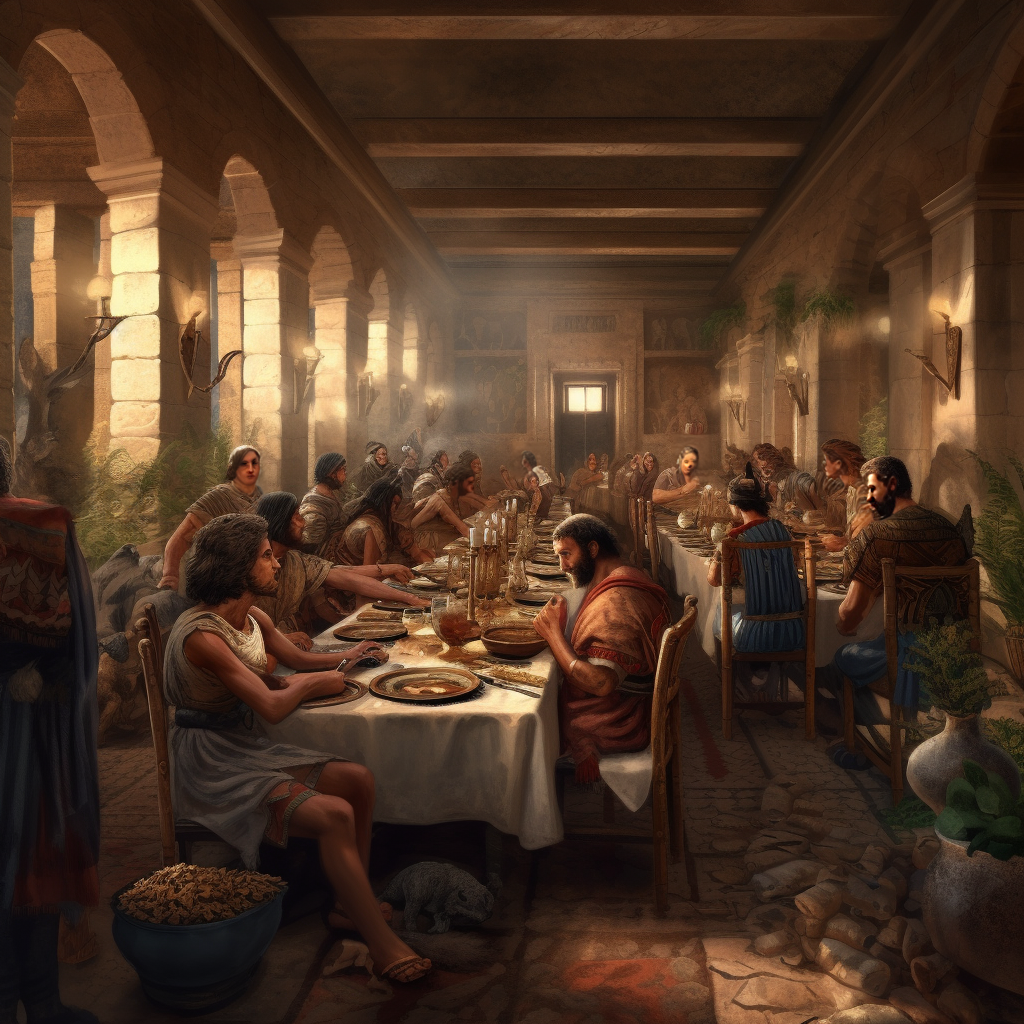
One other aspect of these faiths worth noting is that they provided their members with a supportive community that was far more egalitarian than all other aspects of their lives, offering an opportunity to form social bonds with peers of different social classes and cultural backgrounds. Aristocrats and slaves might worship side-by-side with soldiers and bread bakers. Women made up a significant portion of the membership in most of these communities,58Kearney, M. & Zeitz, J.V. World Saviors and Messiahs of the Roman Empire, 28 BCE-135 CE: The Soterial Age. Edwin Mellen Press. and in some cases, such as the Cult of Isis, they held the priesthood as well.59Heyob, S.K. (1975). The Cult of Isis among Women in the Graeco-Roman World. Brill. By contrast, the strictest Essene communities were generally closed to women as they were seen as polluters of purity and untrustworthy fornicators. There is no indication this long standing policy changed in the time of Peter and James.
The Lord’s Supper

Paul’s second missionary journey took him to cities in Asia Minor, Macedonia, and then Greece.60Paul’s Second Missionary Journey. Blue Letter Bible. https://www.blueletterbible.org/images/rosepub/imageDisplay/maps_paul2_b It’s in an epistle to a community of believers at Corinth (in central Greece) that he describes a ritual he refers to as the Lord’s Supper in which all members of the church sit together to share a common meal. Paul has heard reports that people are acting rowdy during this sacred meal, scarfing down their food or getting drunk.611 Corinthians 11:17-22. The Bible. New International Version. So he reminds them of the meaning of the meal, by recounting what he “received from the Lord”. Paul’s epistles by this point are laced with denials that any information he provides about Jesus Christ was given to him by the so-called pillars in Jerusalem or any other humans. He claims all of it came directly to him alone through visions in which Christ addressed him directly.62Galatians 1:11-12. The Bible. New International Version.
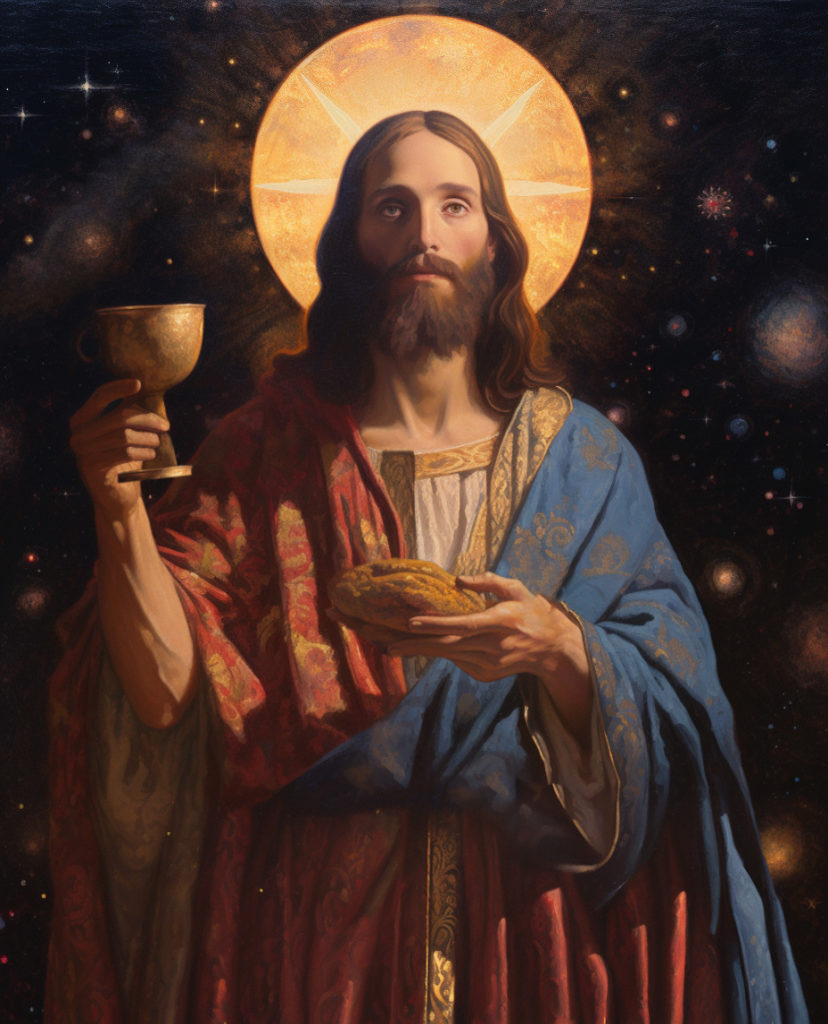
As regards the meal, Paul recounts what he learned through such a vision: “Lord Jesus, on the night he was delivered up, took bread. Then he broke it, saying, ‘This is my body, which is for you. Do this in remembrance of me.’ In the same way, he also took the cup after supper, saying, ‘This cup is the new covenant in my blood. Do this, every time you drink it, in remembrance of me.’” Directly addressing the Corinthians, Paul adds: “For every time you eat this bread and drink the cup, you proclaim the Lord’s death until he comes. For this reason, whoever eats the bread or drinks the cup of the Lord in an unworthy manner will be guilty of the body and blood of the Lord.”631 Corinthians 11:23-27. The Bible. New International Version.
Solemn community meals, as we’ve seen, were also a main ritual of the Essenes who stressed the importance of love—and suppression of hatred—between members of the ekklesia. The Dead Sea Scroll writers also described their community as having made a New Covenant with God.64“New Covenant” is used as a descriptor for the Dead Sea Scrolls community in the Temple Scroll [11Q19], Rule of the Community [1QS, 4Q255-264a, 5Q11, 5Q13], and the Damascus Document [4Q266-273, 5Q12, 6Q15] One aspect of the Lord’s Supper which is distinctly not Essene-friendly, however, is the drinking of blood, even symbolically—something likely to be anathema to even the more moderate Jews of the time. Judaism in general—and the Essene sect in particular—characterizes the drinking of blood as a major sin, and it was one of the actions the Apostolic Decree is specifically said to have strictly forbidden.65Eisenman, R.H. (1998). James the Brother of Jesus: The Key to Unlocking the Secrets of Early Christianity and the Dead Sea Scrolls. Penguin.
So by this point, Paul is clearly making his own modifications to the Eucharist ritual. And they are changes Peter, James, and his other peers in Jerusalem would have condemned if they were aware of them. And there’s very good reason to think they would be, as Paul is continuously complaining of spies and “pseudo-apostles” visiting his communities and preaching “a different Jesus”.662 Corinthians 11:4. The Bible. New International Version. Peter himself was likely traveling to some of the same cities during this time, and perhaps even making an effort to visit the Jewish population in Rome before Paul could become an influential figure there.
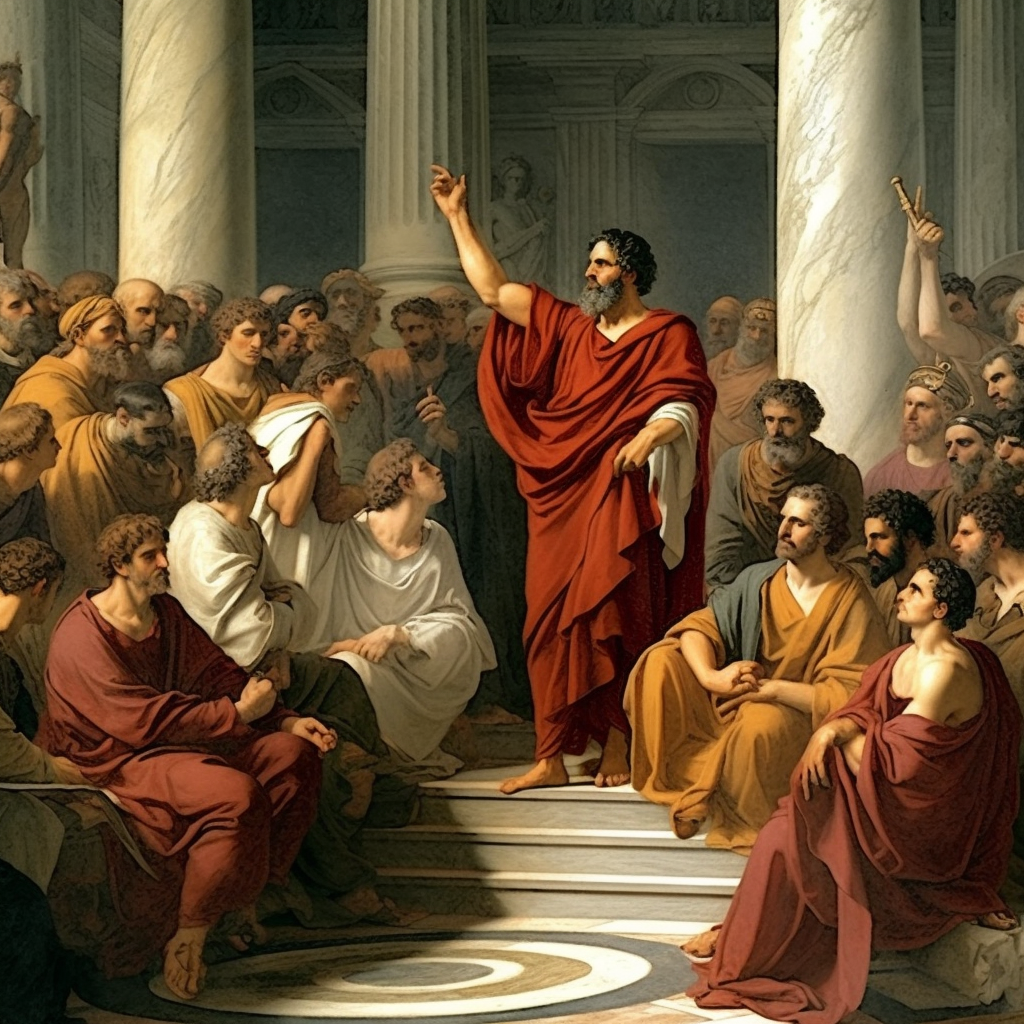
It has even been suggested that some of the latest-written works found among the Dead Sea Scroll record the Essene view of Paul at this time. While the true identities of those mentioned in the scrolls are notoriously difficult to pin down—with their scrupulous avoidance of the use of personal names—there is a recurrent figure referred to as “The Liar” or “The One Who Spouts Lies”. He is described as “exulting in dividing the people”, “rejecting the Torah in the midst of their whole Congregation”, and “misleading many to construct” a church built on “lying” and “blood”, “for the sake of his own glory.”67Eisenman, R.H. (1998). James the Brother of Jesus: The Key to Unlocking the Secrets of Early Christianity and the Dead Sea Scrolls. Penguin.
Paul, for his part, is surely taking aim at his competing apostles when he marvels that “if Satan can disguise himself as an Angel of Light, it is surely easy for his servants to disguise themselves as servants of righteousness.”682 Corinthians 11:13-15. The Bible. New International Version.
Continue Reading:
Footnotes
- 1Whiston, W. (1999). The New Complete Works of Josephus. Kregel Publications.
- 2Pliny the Elder, Liber XXVIII
- 3Tacitus, The Annals, IV.67.
- 4Whiston, W. (1999). The New Complete Works of Josephus. Kregel Publications.
- 5Whiston, W. (1999). The New Complete Works of Josephus. Kregel Publications.
- 6Whiston, W. (1999). The New Complete Works of Josephus. Kregel Publications.
- 7Suetonius, Caligula 9.
- 8Suetonius. Caligula 21.
- 9Pliny the Elder. XVI.76.
- 10Carlson, D.N. Caligula’s Floating Palaces. Archaeology. May/June 2002, Vol. 55, Issue 3
- 11Suetonius, Caligula 7.
- 12Barrett, A.A. (2015). Caligula: the abuse of power. London: Routledge.
- 13Philo, On the Embassy XI–XV.
- 14Whiston, W. (1999). The New Complete Works of Josephus. Kregel Publications.
- 15Whiston, W. (1999). The New Complete Works of Josephus. Kregel Publications.
- 16Whiston, W. (1999). The New Complete Works of Josephus. Kregel Publications.
- 17Whiston, W. (1999). The New Complete Works of Josephus. Kregel Publications.
- 18Levick, B. (2015). Claudius. Routledge.
- 19Whiston, W. (1999). The New Complete Works of Josephus. Kregel Publications.
- 20Whiston, W. (1999). The New Complete Works of Josephus. Kregel Publications.
- 21Whiston, W. (1999). The New Complete Works of Josephus. Kregel Publications.
- 22Eisenman, R.H. (1998). James the Brother of Jesus: The Key to Unlocking the Secrets of Early Christianity and the Dead Sea Scrolls. Penguin.
- 23Galatians 1:18-19. The Bible. New International Version.
- 24Acts 11:25-26. The Bible. New International Version.
- 25Acts 13:1. The Bible. New International Ve
- 26Whiston, W. (1999). The New Complete Works of Josephus. Kregel Publications.
- 27Goodman, M. (1995). Mission and Conversion: Proselytizing in the Religious History of the Roman Empire, Clarendon Paperbacks.
- 28Whiston, W. (1999). The New Complete Works of Josephus. Kregel Publications.
- 29Whiston, W. (1999). The New Complete Works of Josephus. Kregel Publications.
- 30Acts 9:10-18. The Bible. New International Version.
- 31Eisenman, R.H. (1998). James the Brother of Jesus: The Key to Unlocking the Secrets of Early Christianity and the Dead Sea Scrolls. Penguin.
- 32Galatians 2:11-21. The Bible. New International
- 33Paul’s First Missionary Journey Map. https://www.biblestudy.org/maps/pauls-first-journey-map.html
- 34Acts 15:36-41. The Bible. New International Version.
- 35Romans 16:25-26. The Bible. New International Version.
- 36Whiston, W. (1999). The New Complete Works of Josephus. Kregel Publications.
- 37Eisenman, R.H. (1998). James the Brother of Jesus: The Key to Unlocking the Secrets of Early Christianity and the Dead Sea Scrolls. Penguin.
- 38Galatians 2:1-5. The Bible. New International Version.
- 39Galatians 2:6-9. The Bible. New International Version
- 40Acts 15:19-20. The Bible. New International Version.
- 41Britannica, T. Editors of Encyclopaedia (2021, October 18). Didachē. Encyclopedia Britannica. https://www.britannica.com/topic/Didache
- 42Milavec, A. (2007).The Didache: Faith, Hope, & Life of the Earliest Christian Communities, 50-70 C.E. The Newman Press.
- 43Didache. Early Christian Writings. https://www.earlychristianwritings.com/text/didache-roberts.html
- 44Vermes, G. Complete Dead Sea Scrolls. Penguin Books.
- 45Didache. Early Christian Writings. https://www.earlychristianwritings.com/text/didache-roberts.html
- 46Didache. Early Christian Writings. https://www.earlychristianwritings.com/text/didache-roberts.html
- 47Didache. Early Christian Writings. https://www.earlychristianwritings.com/text/didache-roberts.html
- 48Eisenman, R.H. (1998). James the Brother of Jesus: The Key to Unlocking the Secrets of Early Christianity and the Dead Sea Scrolls. Penguin.
- 49Eisenman, R.H. (1998). James the Brother of Jesus: The Key to Unlocking the Secrets of Early Christianity and the Dead Sea Scrolls. Penguin.
- 50Carrier, R. (2020). Jesus from Outer Space: What the Earliest Christians Really Believed about Christ. Pitchstone Publishing.
- 51Carrier, R. (2020). Jesus from Outer Space: What the Earliest Christians Really Believed about Christ. Pitchstone Publishing.
- 52Ulansey, D. Mithraism: The Cosmic Mysteries of Mithras. http://www.mysterium.com/mithras.html
- 53Goodwin, S.H. (1920). Mormonism and Masonry: Origins, Connections and Coincidences Between Mason and Mormon Temple/Templar Rituals
- 54The Mormon Temple Endowment Ceremony. (2011). Institute for Religious Research. https://mit.irr.org/mormon-temple-endowment-ceremony
- 55King, M.L. (1950). Crozer Theological Seminary. https://kinginstitute.stanford.edu/king-papers/documents/influence-mystery-religions-christianity
- 56King, M.L. (1950). Crozer Theological Seminary. https://kinginstitute.stanford.edu/king-papers/documents/influence-mystery-religions-christianity
- 57Justin Martyr, First Apology https://www.earlychristianwritings.com/text/justinmartyr-firstapology.html
- 58Kearney, M. & Zeitz, J.V. World Saviors and Messiahs of the Roman Empire, 28 BCE-135 CE: The Soterial Age. Edwin Mellen Press.
- 59Heyob, S.K. (1975). The Cult of Isis among Women in the Graeco-Roman World. Brill.
- 60Paul’s Second Missionary Journey. Blue Letter Bible. https://www.blueletterbible.org/images/rosepub/imageDisplay/maps_paul2_b
- 611 Corinthians 11:17-22. The Bible. New International Version.
- 62Galatians 1:11-12. The Bible. New International Version.
- 631 Corinthians 11:23-27. The Bible. New International Version.
- 64“New Covenant” is used as a descriptor for the Dead Sea Scrolls community in the Temple Scroll [11Q19], Rule of the Community [1QS, 4Q255-264a, 5Q11, 5Q13], and the Damascus Document [4Q266-273, 5Q12, 6Q15]
- 65Eisenman, R.H. (1998). James the Brother of Jesus: The Key to Unlocking the Secrets of Early Christianity and the Dead Sea Scrolls. Penguin.
- 662 Corinthians 11:4. The Bible. New International Version.
- 67Eisenman, R.H. (1998). James the Brother of Jesus: The Key to Unlocking the Secrets of Early Christianity and the Dead Sea Scrolls. Penguin.
- 682 Corinthians 11:13-15. The Bible. New International Version.